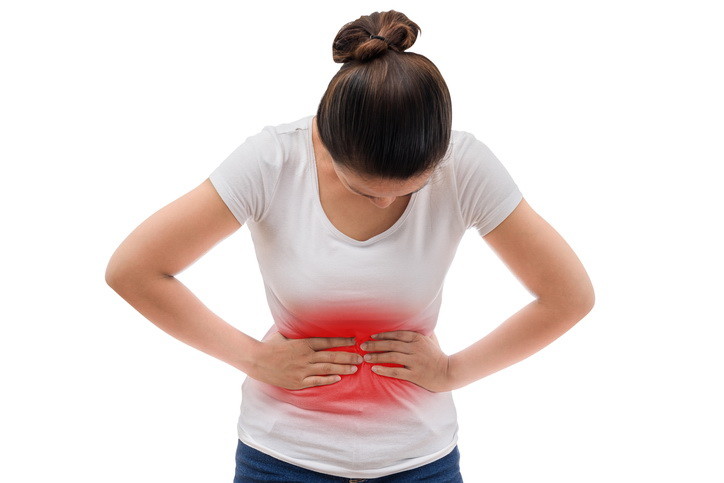Some car crash victims suffer from abdominal pain after a car accident, so if you’re having abdominal pain, set a meeting with one of our personal injury lawyers. We help our clients understand why they develop abdominal pain after a car accident, why abdominal cramps are common from a car accident, if abdominal pain is related to nausea from an accident, and why the abdominal cavity is more prone to injuries. Do not hesitate to get in touch with our lawyers for questions regarding abdominal injuries resulting from car accidents.

Even though you can’t see any visible signs of an abdominal injury, it doesn’t mean that you do not have to worry about anything. In fact, you should be concerned if you suddenly or gradually develop symptoms of abdominal pain, nausea, vomiting, and abdominal cramps. It could mean an injury not only to the abdominal muscles but to the organs as well.
Abdominal pain following a car accident means injury to the abdominal muscles resulting from hitting the steering wheel or the seat belt restraining your body from the sudden motion. The pain and bruising are normal and typically go away in time, especially if the accident was minor.
However, you should be aware of the signs and symptoms of internal bleeding, including extreme pain, abdominal swelling, dizziness, nausea, vomiting, loss of consciousness, headache, and deep purple bruising of the abdominal area.
Physical trauma such as car accidents and blunt force to the abdomen can also cause abdominal cramps, abdominal injuries, and organ damage.
The seat belt’s function is to restrain and keep you in your seat in case of collisions. Because the external force is sudden and extreme, the seat belt will lock to keep you in place, but it won’t be able to stop some of the force of impact completely. With the pressure from the seat belt on your abdominal area, it isn’t uncommon for injuries like small intestinal perforations and inflammation to develop. These processes could lead to scar formation, intestinal stricture, and bowel obstruction.
The scary thing about this type of injury is that they’re unseen, and symptoms usually develop after some time has already passed. So you need to be aware of the development of abdominal tenderness, abdominal distention, constipation, vomiting, and abdominal cramping.
There are many ways car accidents can cause abdominal injuries. For example, the force from the collision could have knocked you forward, causing your torso to hit the steering wheel, or the seat belt could have caused abdominal bruising and injury. There could also be extensive abdominal damage due to blunt trauma or penetrating injuries. Any of these examples will cause some damage to the abdominal structures and present symptoms such as severe abdominal pain, bruising, vomiting, and nausea.
Dizziness, vertigo, and extreme abdominal pain typically cause nausea and vomiting. Stress and anxiety are also normal feelings after vehicular accidents. These symptoms typically go away on their own. If they persist, it might mean more than just pain, stress, and anxiety but a concussion, traumatic brain injury, internal bleeding, or even damaged abdominal organs.
One of the reasons why the abdominal cavity is more prone to injuries is because there are no bone structures around to protect it. The skull protects the brain, the rib cage protects the heart and lungs, and the spinal column protects the spinal cord. The abdominal cavity, on the other hand, has no hard structures that offer it protection.
Yes, the rib cage and the pelvis offer some protection, but they can’t protect the rest of the abdominal organs like the stomach and the intestines. These are vulnerable to blunt trauma and penetrating injuries.
If you were involved in a car accident, it’s important to monitor your abdominal symptoms. You need to report to your doctor any changes in your symptoms, especially if they worsen and start preventing you from doing your normal activities.
What can you do?
It’s not uncommon for delayed symptoms to develop in abdominal injuries sustained from a car accident. If you don’t do anything to immediately address the problem and simply wait for it to “go away,” it might cost you a lot more in medication, treatments, and even surgery.
If you suspect that a car accident caused your abdominal problems, you should immediately get in touch with one of our car accident lawyers in Sacramento. You can rely on our reputable lawyers to help you understand that abdominal pain is common after a car accident, that abdominal cramps can develop months after a car accident, that you can develop pain and nausea from an accident, and how and why your abdominal cavity is more prone to injuries. If you’re suffering from abdominal pain after a car accident caused by a negligent driver, a Sacramento car accident lawyer is here to assist you – from filing suit to calculating the compensation for your pain and suffering.

